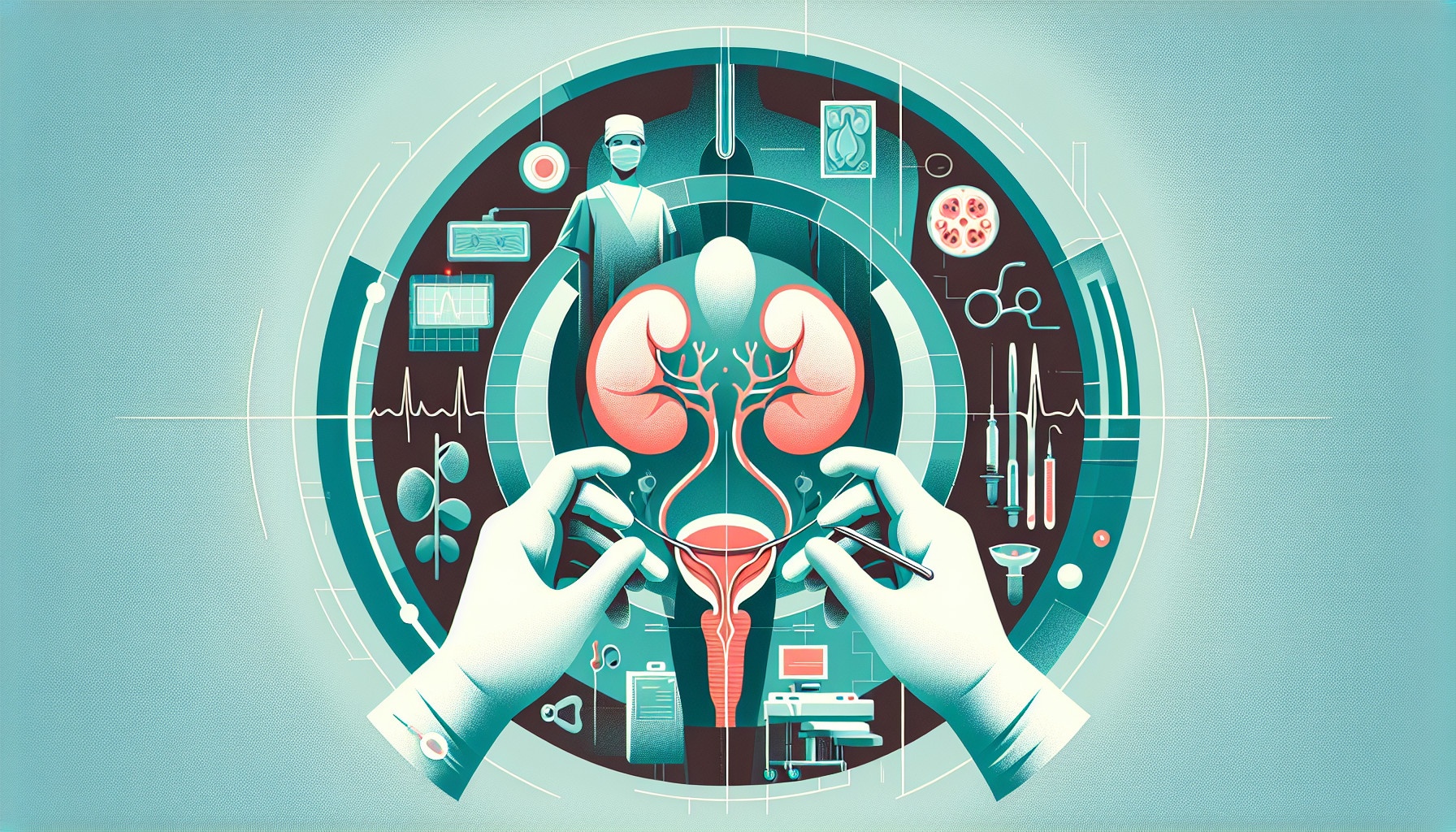Our Summary
This research paper discusses a study where scientists attempted to replace the bladder in pigs with a synthetic version. The main issue scientists face when trying to create synthetic organs is making them work with the body’s natural tissues. In this study, they used a special material called bilayer silk fibroin scaffold (BLSF) to help the synthetic bladder connect with the rest of the pig’s body.
The researchers first implanted these synthetic bladders into six young female pigs. Unfortunately, some of the early attempts failed due to design flaws or health issues in the pigs. However, the team made changes to the design and the next attempts were more successful.
One pig lived for seven days with the synthetic bladder, and when the pig was examined after death, it was found that the bladder had successfully connected with the necessary tissues. Two other pigs lived for 11 and 12 weeks with the synthetic bladder, before they were put down due to unrelated health issues.
The results of this study show that it’s possible to replace a bladder with a synthetic version for up to three months. This is the second longest time a synthetic bladder has been successfully used in a living creature. The special material, BLSF, was key to this success, as it allowed the pig’s body to accept the synthetic bladder.
FAQs
- What is the main challenge faced by scientists in creating synthetic organs?
- What special material was used in this study to help a synthetic bladder connect with a pig’s body?
- What was the longest period a synthetic bladder has been successfully used in a living creature according to this study?
Doctor’s Tip
One helpful tip a doctor might tell a patient about bladder surgery is to follow all post-operative instructions carefully to ensure a successful recovery. This includes taking any prescribed medications, attending follow-up appointments, and avoiding activities that could strain the bladder during the healing process. It’s also important to report any unusual symptoms or signs of infection to your healthcare provider right away. By following these guidelines, you can help maximize the effectiveness of the surgery and minimize the risk of complications.
Suitable For
Patients who may be recommended bladder surgery include those with:
Bladder cancer: Patients with bladder cancer may need surgery to remove tumors or the entire bladder. In some cases, a partial bladder removal (partial cystectomy) may be performed, while in other cases, a complete bladder removal (radical cystectomy) may be necessary.
Bladder prolapse: Bladder prolapse occurs when the bladder drops down into the vagina due to weakened pelvic floor muscles. Surgery may be recommended to repair the prolapse and provide support to the bladder.
Urinary incontinence: Patients with severe urinary incontinence that does not respond to conservative treatments may be recommended bladder surgery to improve bladder control.
Interstitial cystitis: Interstitial cystitis is a chronic condition characterized by bladder pain and frequent urination. In some cases, surgery may be recommended to remove ulcers or scar tissue in the bladder.
Bladder stones: Patients with large bladder stones that cannot be removed using other methods may require surgery to remove the stones and improve bladder function.
Neurogenic bladder: Patients with neurogenic bladder, a condition in which the nerves that control bladder function are damaged, may require surgery to improve bladder emptying and reduce the risk of urinary tract infections.
It is important for patients to discuss their symptoms and treatment options with their healthcare provider to determine if bladder surgery is the best course of action for their individual situation.
Timeline
Before bladder surgery, a patient may experience symptoms such as frequent urination, pain during urination, urinary incontinence, blood in the urine, and difficulty emptying the bladder. They may undergo various tests such as urine tests, imaging tests, and cystoscopy to diagnose the underlying condition.
After bladder surgery, the patient will typically spend some time in the hospital for recovery. They may experience pain, discomfort, and urinary catheterization post-surgery. The recovery period can vary depending on the type of surgery performed. Patients may need to follow specific instructions regarding wound care, diet, and activity level. Physical therapy may be recommended to help regain bladder function.
Over time, the patient should see improvements in their symptoms and quality of life. They may need to follow up with their healthcare provider for regular check-ups and monitoring. In some cases, additional treatments or adjustments may be necessary to optimize bladder function. Overall, bladder surgery can significantly improve a patient’s quality of life and alleviate the symptoms associated with bladder conditions.
What to Ask Your Doctor
Some questions a patient should ask their doctor about bladder surgery include:
- What type of bladder surgery is recommended for my condition?
- What are the potential risks and complications associated with bladder surgery?
- How long is the recovery period after bladder surgery?
- Will I need to make any lifestyle changes after bladder surgery?
- What are the success rates of bladder surgery for my specific condition?
- Will I need to undergo any additional tests or procedures before the surgery?
- What type of anesthesia will be used during the surgery?
- How long will the synthetic bladder, if used, be expected to last in my body?
- What are the chances of rejection or complications with a synthetic bladder?
- Are there any alternative treatment options to bladder surgery that I should consider?
Reference
Authors: Jiang P, Ali SN, Arada RB, Peta A, Brevik A, Ayad M, Shin A, Morgan KL, Larson K, Larson E, Gundogdu G, Tapiero S, Farzaneh T, Patel RM, Mauney J, Landman J, Clayman RV. Journal: J Endourol. 2023 Mar;37(3):341-352. doi: 10.1089/end.2022.0296. PMID: 36301916
